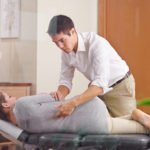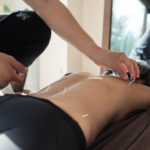Help For An Aching Back?
What do you recommend for chronic low back pain?
Andrew Weil, M.D. | May 11, 2007

My first suggestion is that you read one or both books on low back pain by Dr. John Sarno, a physician and professor of rehabilitation medicine at New York University. Dr. Sarno believes that most back pain stems from a condition he calls tension myositis syndrome (TMS, myositis means muscle inflammation), a combination of muscle spasm and inflammation stemming from an unbalanced pattern of nerve signals to nearby muscles and interference with their blood supply. Dr. Sarno explains his theory in his books Healing Back Pain: the Mind Body Connection (Warner Books, 1991) and Mindbody Prescription: Healing the Body, Healing the Pain (Warner Books, 1998).
I’m convinced that Dr. Sarno is right and that treatment should be aimed at changing patterns of thinking, feeling and handling stress, all of which have led to the pain. In the meantime, here are some approaches that can bring relief:
- Practice a relaxation technique daily: Options include mindfulness meditation (proven to ease chronic back pain), breath work, guided imagery, biofeedback, progressive muscle relaxation and hypnotherapy.
- Try therapeutic yoga: The stretches can reduce muscle tension, strengthen the back and promote flexibility. To find a therapeutic yoga instructor visit: http://www.iayt.org/site/profile/search.aspx
- Bodywork: Both the Alexander Technique and the Feldenkrais Method can change habits of posture and movement that contribute to back pain. You could also try Bonnie Prudden Myotherapy, which uses manual pressure to release muscle tension. To find a practitioner near you log on to www.bonnieprudden.com
- Electrical stimulation: Transcutaneous electrical nerve stimulation (TENS) delivers low level electrical pulses to the lower back (you can get a portable device for home use). Percutaneous electrical nerve stimulation (PENS) works the same way but delivers the pulses via needles inserted into the back rather than electrodes used with TENS.
- Exercise: Both aerobic and strength training exercises can help. Aerobic exercise includes walking, swimming or cycling, all of which can help strengthen back. Aerobic exercise also burns calories and help you lose any excess weight that may contribute to your back problem. In addition, do strength training at least twice a week to tone and firm the abdominal, leg and buttock muscles that help to support the back. Make sure you get proper instruction before embarking on a strength training program; using either free weights or weight machines improperly can defeat the purpose. Make sure you do some stretching or yoga for flexibility.
- Massage: Therapeutic massage can provide long lasting results. A study published in the Archives of Internal Medicine in April 2001 found that therapeutic massage was more effective for back pain than Traditional Chinese acupuncture. To find a qualified massage therapist visit: http://www.amtamassage.org/findamassage/locator.htm, the Web site of the American Massage Therapy Association.
Andrew Weil, M.D.












